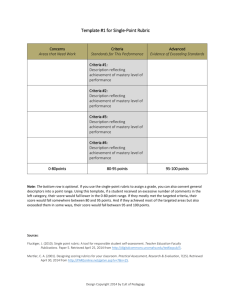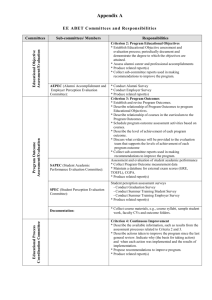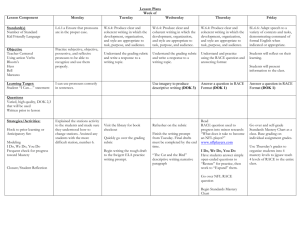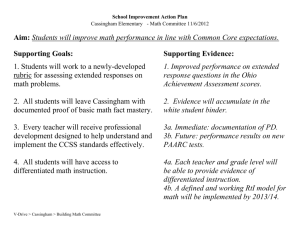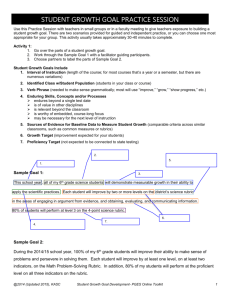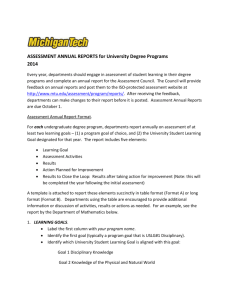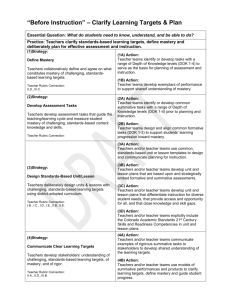Assessment Plan: TEMPLATE
advertisement
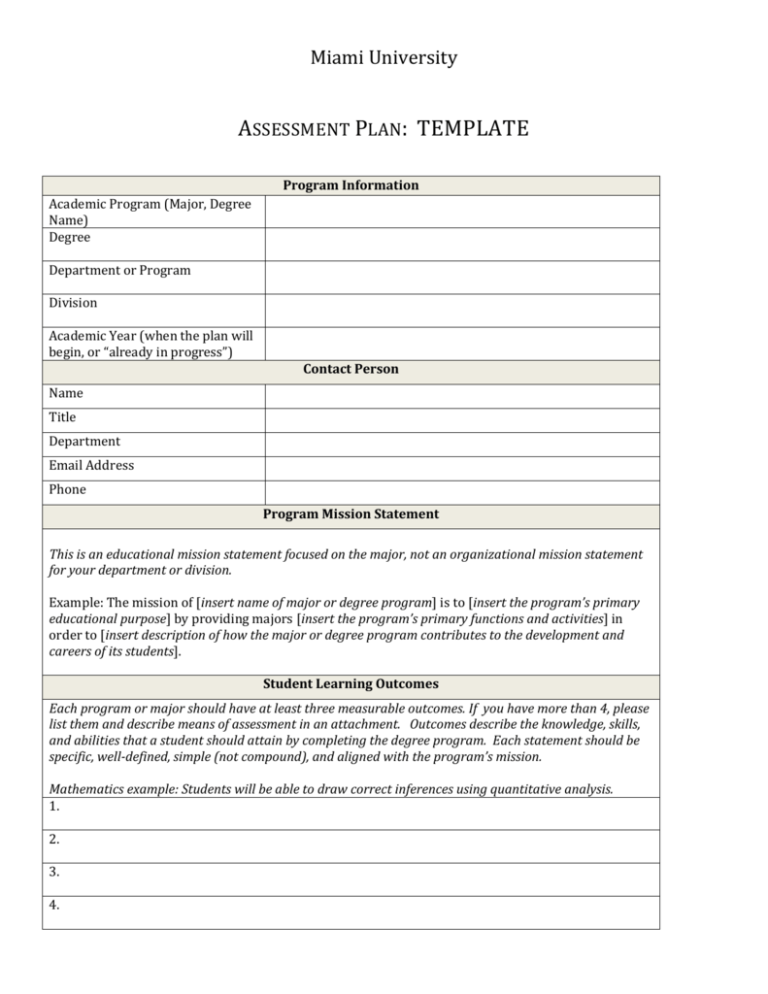
Miami University ASSESSMENT PLAN: TEMPLATE Program Information Academic Program (Major, Degree Name) Degree Department or Program Division Academic Year (when the plan will begin, or “already in progress”) Contact Person Name Title Department Email Address Phone Program Mission Statement This is an educational mission statement focused on the major, not an organizational mission statement for your department or division. Example: The mission of [insert name of major or degree program] is to [insert the program’s primary educational purpose] by providing majors [insert the program’s primary functions and activities] in order to [insert description of how the major or degree program contributes to the development and careers of its students]. Student Learning Outcomes Each program or major should have at least three measurable outcomes. If you have more than 4, please list them and describe means of assessment in an attachment. Outcomes describe the knowledge, skills, and abilities that a student should attain by completing the degree program. Each statement should be specific, well-defined, simple (not compound), and aligned with the program’s mission. Mathematics example: Students will be able to draw correct inferences using quantitative analysis. 1. 2. 3. 4. Miami University Means of Assessment Data Collection For each learning outcome, state where and when data will be collected, who will be responsible, how and if student work will be sampled, and estimated sample size. Please indicate how you will assure that the data are representative. Direct, CourseEmbedded Assessment For each learning outcome, list the course or courses where students will be demonstrating the outcomes and the assignment(s) in them that you will use for assessment purposes (e.g., capstone project, final examination, research paper, portfolio, etc.). For each learning outcome, describe how you will score students’ level of mastery of the outcomes. For example, will you use a rubric or answer key, or will it be scored by a testing company? If your plan has a rubric, be sure to include the rubric as an appendix. Who will do the scoring? One or more persons? How will scores be reported (e.g., total scales or sub scores)? For each learning outcome, describe how you will indirectly assess students’ and other stakeholders’ perceptions of their learning in relation to these outcomes (e.g., course evaluations, focus groups with graduating students, alumni survey, employer survey, etc.). Scoring Indirect Assessment (Perceptions of Student Learning) Attach relevant questions on online course evaluations, alumni survey, employer survey, focus session, etc. in an appendix. Completing the Package Feedback Loop Timetable Prior approvals Available data Describe how and when you plan to share the findings of the assessment of these outcomes with faculty and other stakeholders. Explain briefly how you will ensure that your unit makes improvements based upon the assessment findings and revises the assessment plan as needed. Attach a timeline of major assessment activities to fulfill the assessment plan. Has this plan already been approved by an external or internal body, e.g., ABET, CAS divisional writing committee? If so, whom? Do you already have data collected on one or more of your outcomes? Please indicate YES or NO here. PLEASE RETURN YOUR SURVEY TO CECILIA SHORE BY SEPT 15. Miami University CHECKLIST FOR DEVELOPING & MAINTAINING AN ASSESSMENT PLAN ◊ Name a contact or point person for assessment of each degree program or major in your unit. ◊ Create a timeline for assessment activities. Be sure to include the steps below. ◊ Create or review the educational mission statement for the degree program or major. ◊ Develop at least three student learning outcomes for the program or major that are aligned with the educational mission statement. ◊ Create a target goal for outcomes (i.e., percent of students achieving them by graduation), and identify courses (and assignments and activities within them) where outcomes are learned by most students in the program. ◊ Identify how you will score or directly measure students’ level of mastery of these outcomes (e.g., rubric, answer key). ◊ Identify how you will measure perceptions of students’ mastery of outcomes (e.g., course evaluations, alumni survey, focus groups, employer survey). ◊ Collect, analyze and interpret data. ◊ Discuss results with faculty and other stakeholders. Identify changes needed to improve student learning. ◊ Act on results, and maintain feedback loops. ◊ Create assessment report; re-evaluate and revise assessment plan as needed.


